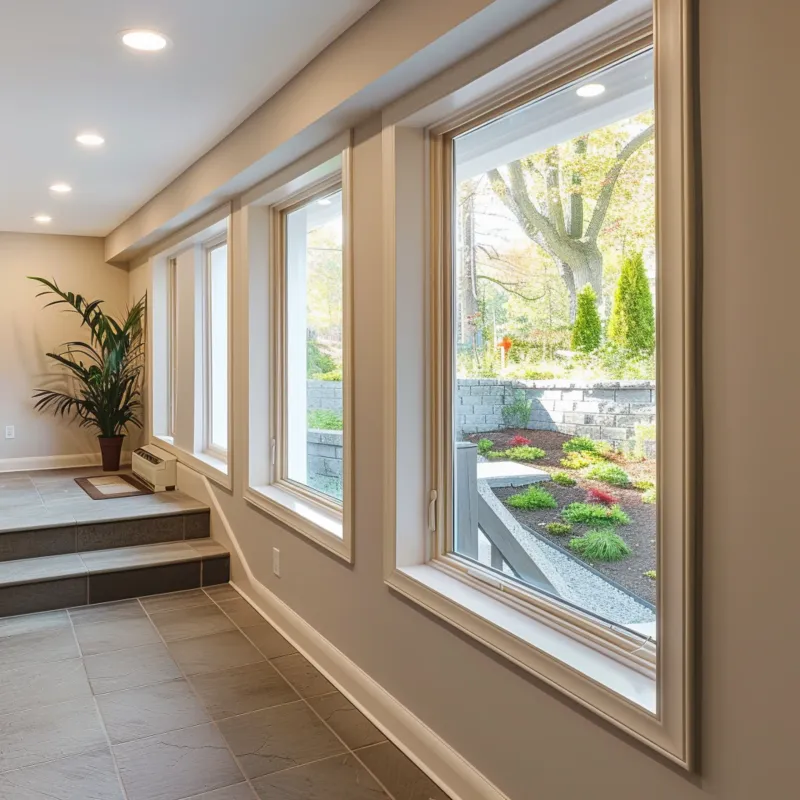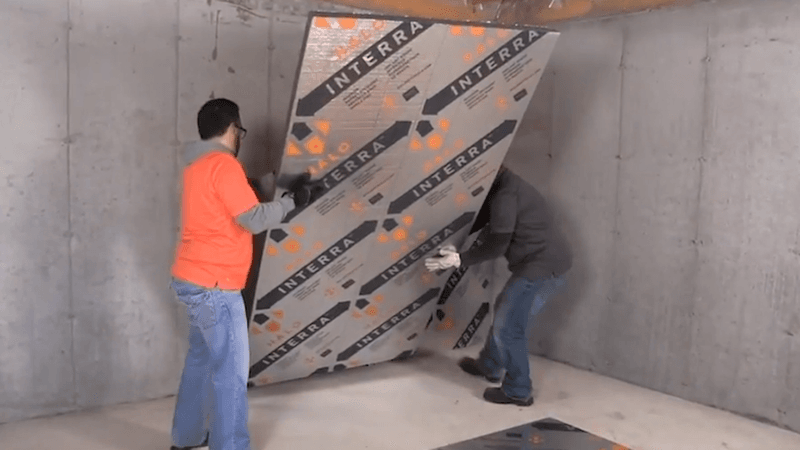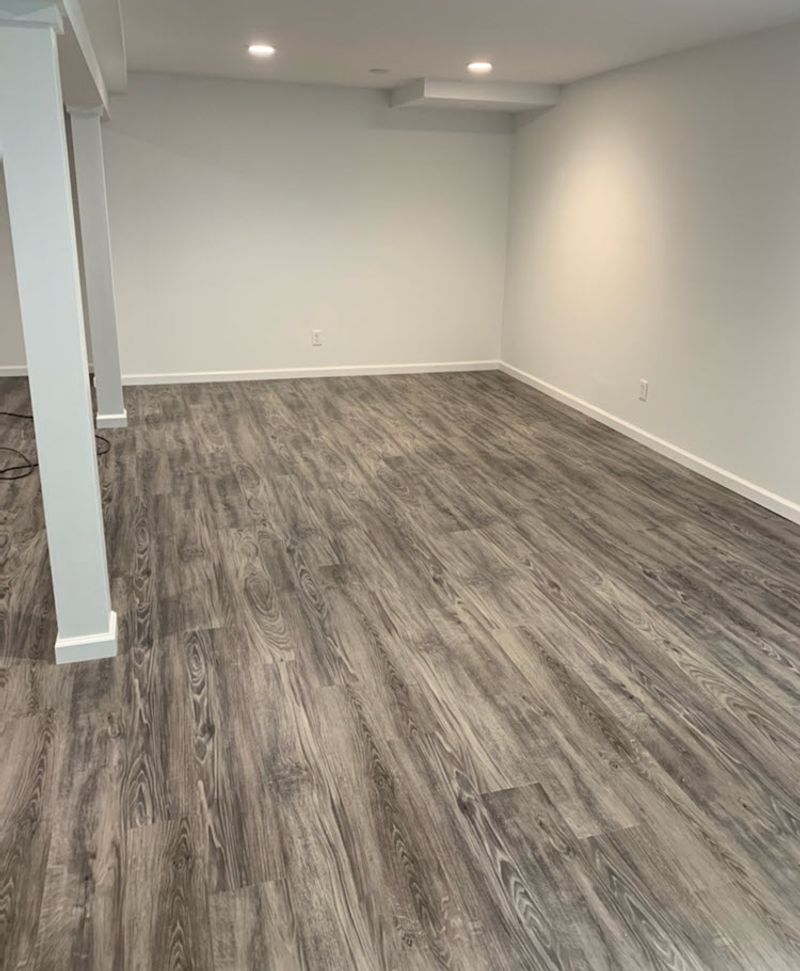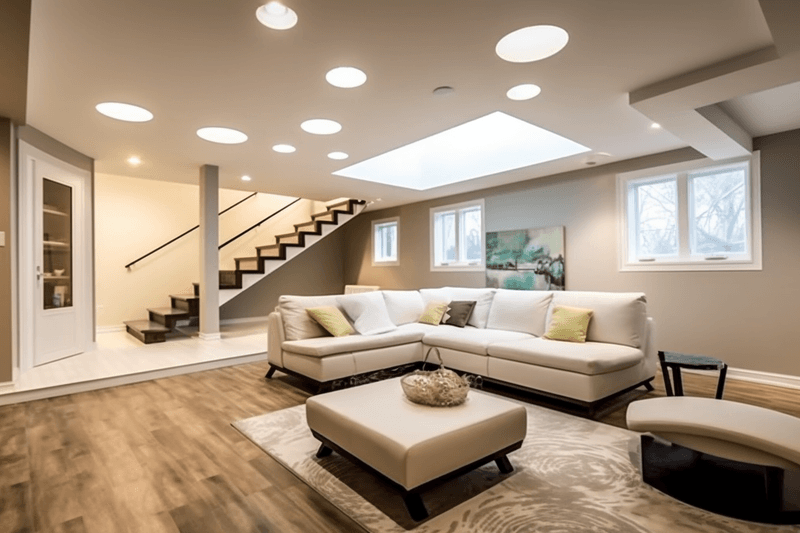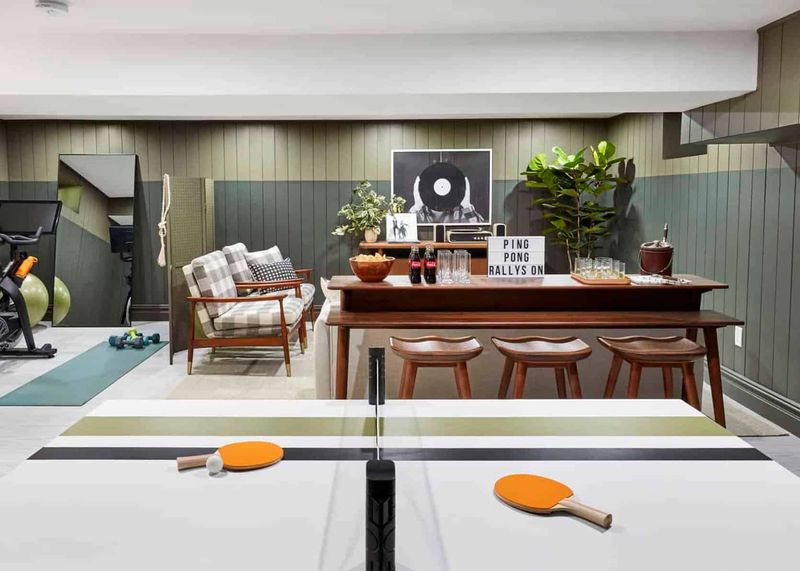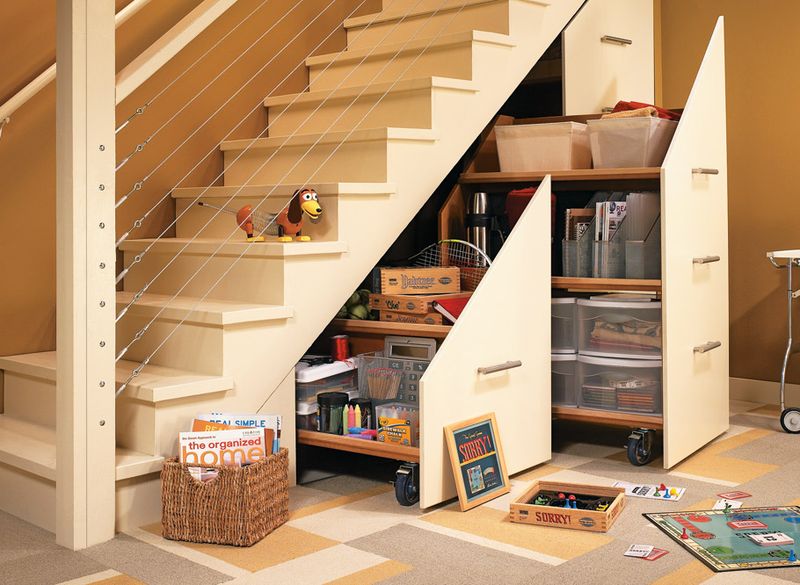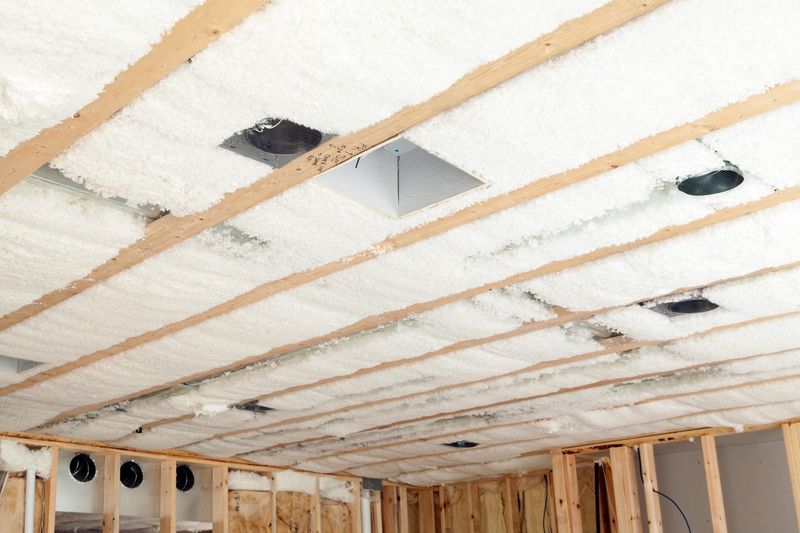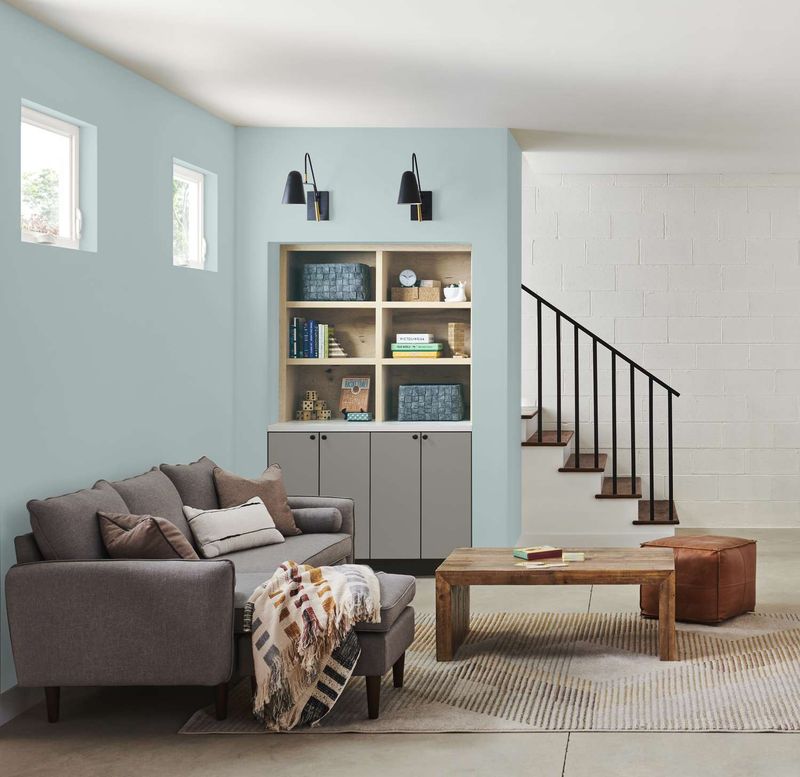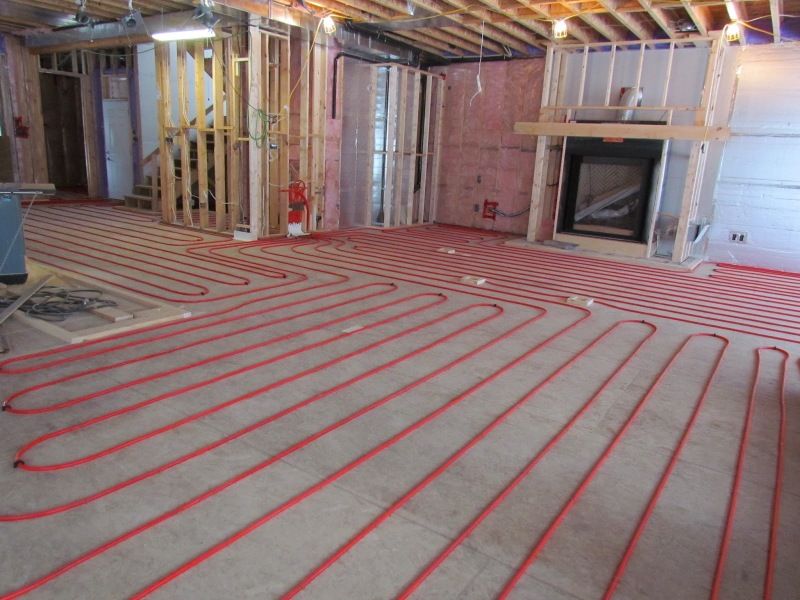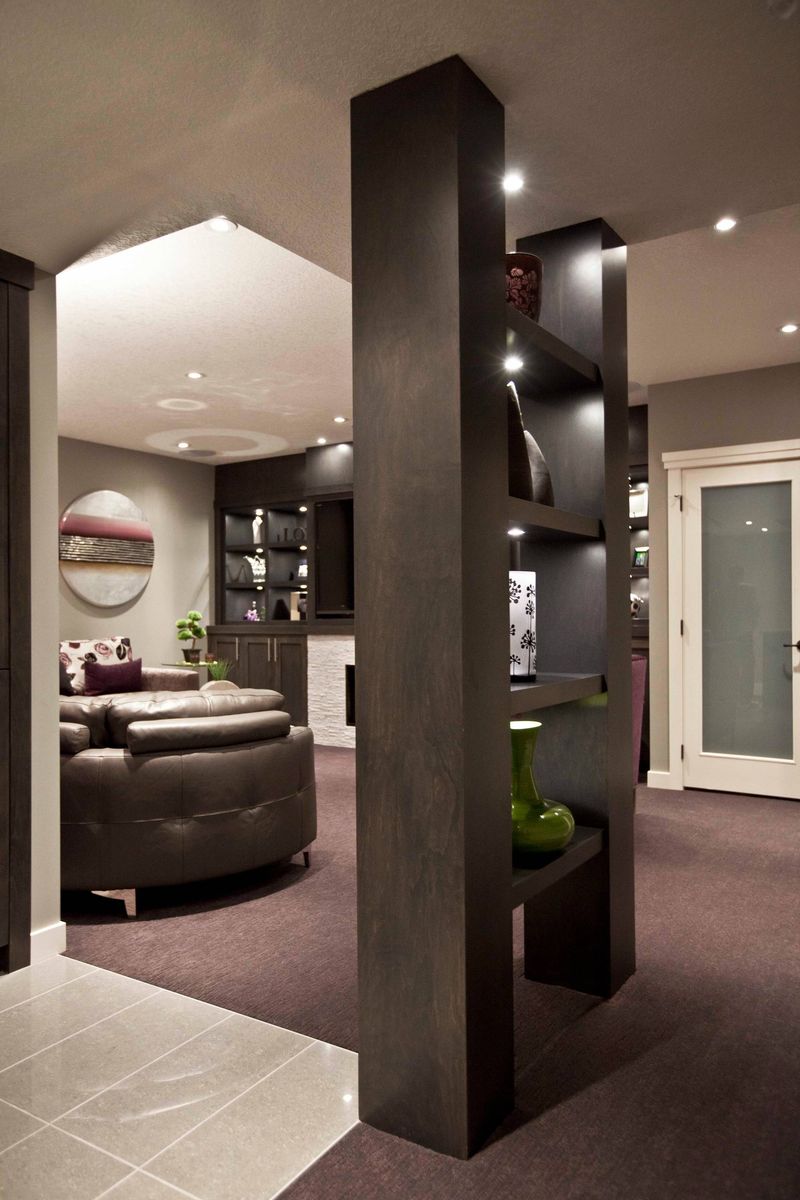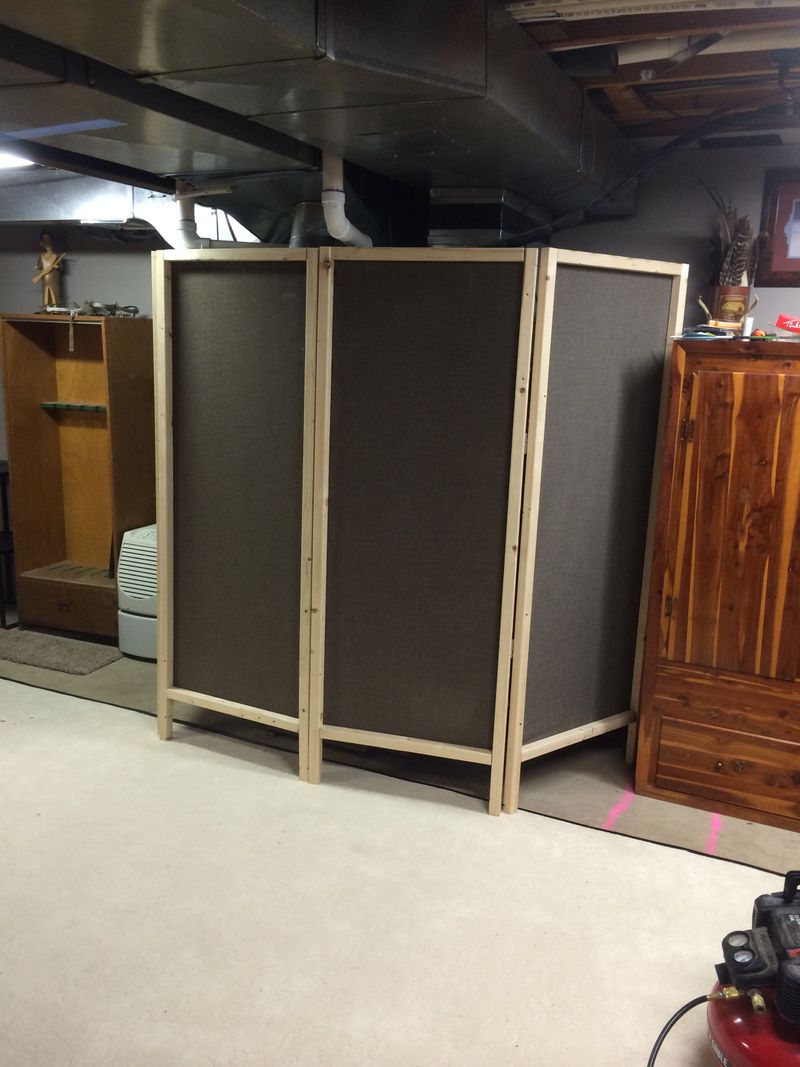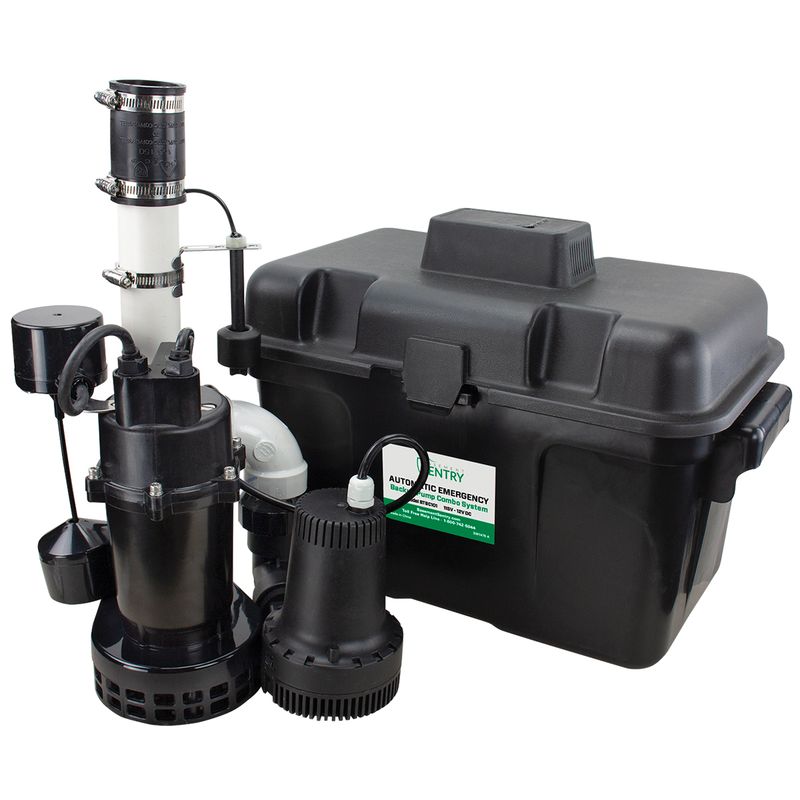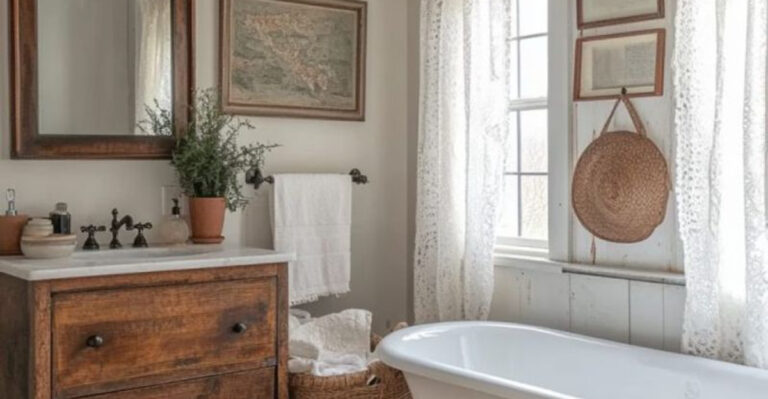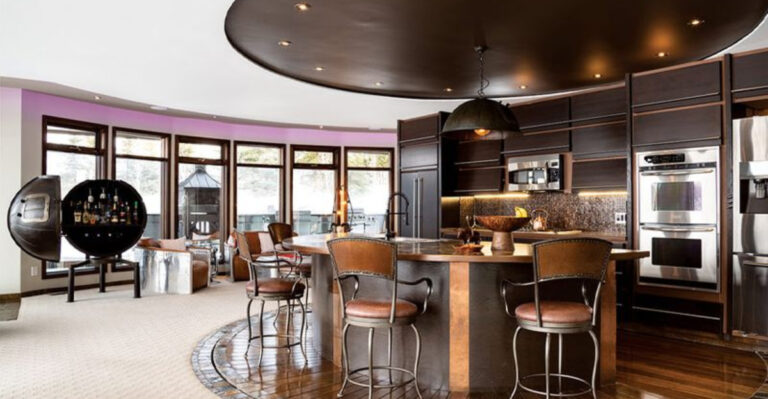18 Tips For Turning A Basement Into A Living Space
Transforming your basement from a dark storage area into a cozy living space can add valuable square footage to your home.
With the right approach, that underutilized underground room can become your favorite spot for relaxation, entertainment, or even an extra bedroom.
Let’s explore some practical tips to help you convert your basement into a functional and inviting living area that your family will love.
1. Check for Water Issues First
Before picking paint colors or planning furniture layouts, investigate any moisture problems. Water damage can ruin your renovation faster than you can say ‘mold infestation’!
Look for water stains, musty smells, or efflorescence (white powdery deposits) on walls. If you find issues, address them with proper waterproofing solutions before proceeding with any cosmetic improvements.
2. Maximize Natural Light
Feeling like you’re living in a cave is nobody’s idea of comfort. Enlarge existing windows by installing egress windows that meet building codes while bringing in precious sunshine.
For areas where windows aren’t possible, consider light tubes or solar tubes that channel daylight from your roof. Mirrors strategically placed opposite windows can also help bounce natural light throughout the space.
3. Install Proper Insulation
Shivering while watching TV? Not with the right insulation! Basement walls typically leak heat, making the space feel chilly and unwelcoming.
Rigid foam insulation works wonders for basement walls as it provides thermal resistance while acting as a moisture barrier. Don’t forget to insulate rim joists and any exposed pipes to prevent heat loss and potential freezing during winter months.
4. Choose Appropriate Flooring
When selecting basement flooring, moisture resistance should top your priority list. Luxury vinyl plank (LVP) flooring offers a perfect combination of water resistance, warmth, and style.
Other excellent options include ceramic tile, engineered hardwood with a moisture barrier, or even carpet tiles with waterproof backing that can be easily replaced if damaged.
5. Plan Proper Lighting
Shadows lurking in corners can make even the nicest basement feel like a horror movie set! Since basements typically lack abundant natural light, a thoughtful lighting plan is crucial.
Layer your lighting with recessed ceiling lights for overall illumination, task lighting for specific activities, and accent lights to highlight architectural features. Dimmer switches offer flexibility to adjust brightness levels according to different activities and times of day.
6. Address Ceiling Height Concerns
Ducking to avoid pipes isn’t exactly the hallmark of luxury living! Low ceilings often plague basements, but there are clever workarounds.
Consider removing drop ceilings and painting exposed ductwork and pipes with dark colors to make them visually recede. For areas with severely limited height, create designated zones like reading nooks or children’s play areas where standing isn’t necessary.
7. Ensure Proper Ventilation
Musty air can quickly turn your basement retreat into a place everyone avoids. Without adequate airflow, basements become breeding grounds for mold and mildew.
Install a good quality dehumidifier to maintain optimal humidity levels between 30-50%. Consider adding an air exchanger or extending your HVAC system to the basement. Ceiling fans also help circulate air and prevent that stale basement smell from developing.
8. Create Multiple Zones
One giant room can feel impersonal and lacking in function. The beauty of a basement renovation lies in its potential to serve multiple purposes simultaneously!
Use area rugs, furniture arrangement, different ceiling treatments, or partial walls to define separate zones. A media area with comfortable seating can exist alongside a craft corner, home gym section, or kids’ play zone, making the space functional for the entire family.
9. Add an Emergency Exit
Safety first isn’t just a catchy slogan – it’s essential when converting your basement! Building codes typically require an emergency egress window or door in basement living spaces.
Besides being a legal requirement, an egress window provides peace of mind and additional natural light. If your basement is completely below grade, you’ll need to install a window well with steps or a ladder to ensure easy escape in case of emergency.
10. Incorporate Smart Storage Solutions
Clutter can quickly transform your new living space back into a glorified storage room. Think vertically when planning storage to maximize your square footage!
Built-in shelving, furniture with hidden compartments, and under-stair storage drawers make excellent use of otherwise wasted space. Consider installing recessed cabinets between wall studs for shallow storage that doesn’t protrude into the room.
11. Consider Sound Insulation
Nobody wants to hear every footstep from above when trying to enjoy a movie! Sound transmission between floors can be a major annoyance in basement living spaces.
Install acoustic insulation between floor joists and consider a drop ceiling with sound-dampening tiles. For walls, use sound-dampening drywall or add mass-loaded vinyl behind standard drywall. Soft furnishings like rugs, curtains, and upholstered furniture also help absorb sound.
12. Warm Up the Space with Rugs
Even with proper flooring, basements can still feel chilly underfoot. Area rugs add instant warmth, both physically and visually, transforming the atmosphere of your underground retreat.
Layer rugs of different textures to create depth and interest. For basement applications, choose synthetic materials that resist moisture and mildew. Secure rugs with non-slip pads to prevent accidents on potentially slick basement floors.
13. Embrace the Right Color Palette
Dark, cave-like vibes? Not in your basement! Color choices dramatically impact how spacious and welcoming your underground oasis feels.
Light, reflective colors like soft whites, pale blues, or gentle greens make spaces feel larger and brighter. Save darker colors for accent walls or furnishings. Consider a monochromatic scheme with varying tones of the same color to create depth without making the space feel closed in.
14. Add Warmth with Radiant Floor Heating
Cold feet can make even the most beautiful basement feel uncomfortable. Underground spaces naturally stay cooler, making floor heating an excellent investment.
Electric radiant floor heating mats can be installed under tile, laminate, or engineered wood floors. For new construction, hydronic systems that circulate hot water through tubes beneath the floor provide efficient, comfortable heat that rises naturally through the space.
15. Disguise Support Columns
Those essential structural posts don’t have to scream “unfinished basement”! With some creativity, support columns can become design features rather than eyesores.
Transform columns into architectural elements by building decorative surrounds or bookcases around them. Mirrored columns create an illusion of space, while rope-wrapped columns add nautical charm. You can even incorporate columns into room dividers or bar counters.
16. Hide Unsightly Utilities
Water heaters and furnaces aren’t exactly stylish decor elements! Creating a separate utility room shields mechanical systems from your living space while providing access for maintenance.
If a separate room isn’t possible, consider decorative screens, curtains, or custom cabinets to conceal utility areas. Ensure any solution allows proper ventilation and easy access for repairs or replacement. Paint exposed pipes and ducts to help them blend with the ceiling.
17. Ensure Reliable Internet and Cell Service
Nothing ruins a basement movie night faster than buffering videos! Underground spaces often suffer from poor connectivity due to signal interference from foundation walls.
Install a mesh WiFi system with satellite units in the basement to ensure strong coverage. For cell service, consider a signal booster if reception is spotty. Plan for plenty of outlets and USB charging ports throughout the space for maximum convenience.
18. Install a Sump Pump and Battery Backup
When it comes to basements, hope for the best but prepare for the worst! Even with excellent waterproofing, extreme weather events can threaten your investment.
A quality sump pump system with battery backup provides essential protection against flooding. Consider models with alarm features that alert you to potential problems. For ultimate peace of mind, add a water sensor system that detects leaks before they become disasters.



